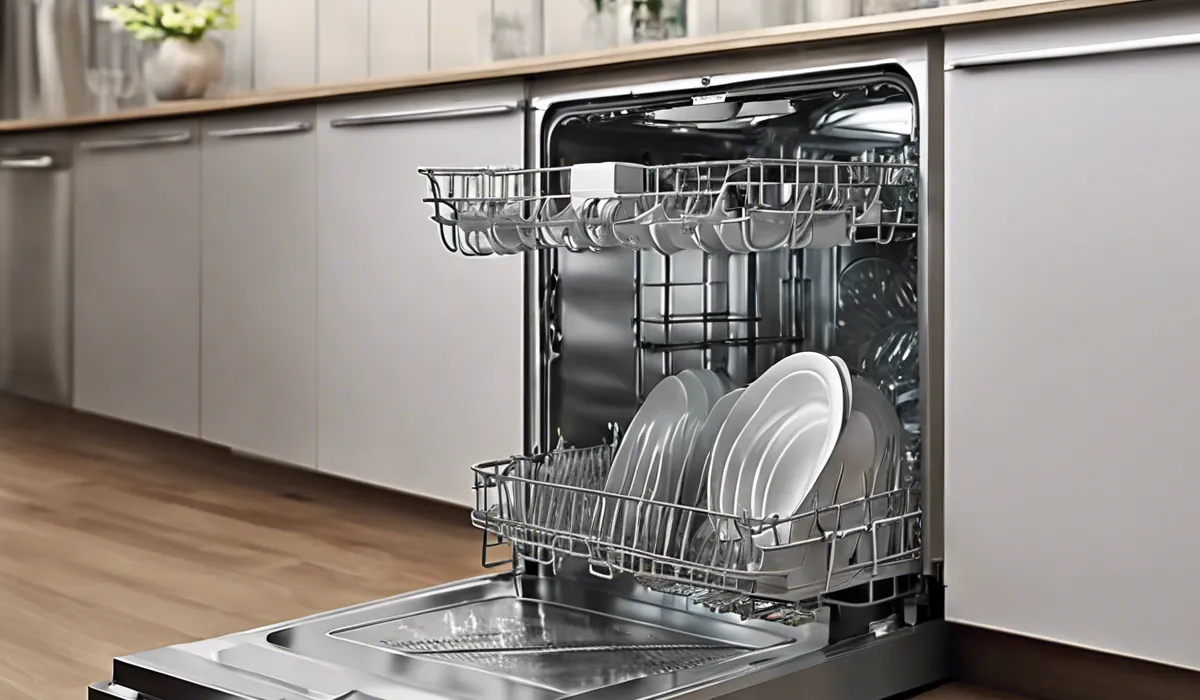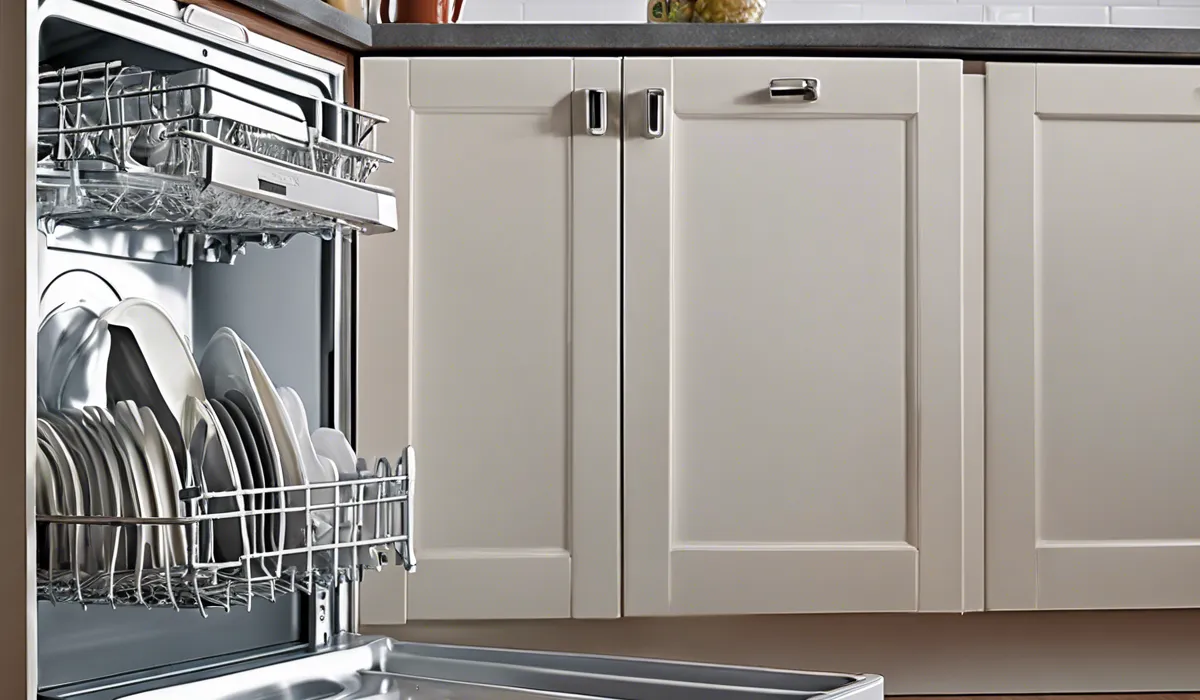How to Tighten Dishwasher Door: Quick & Easy Fix!
To tighten a dishwasher door, locate the hinges on either side of the door. Use a screwdriver to adjust the hinge screws. Tighten them clockwise to reduce door slack. Be cautious not to overtighten, which can damage the hinges or door alignment.
Identifying the Cause of a Loose Dishwasher Door

Common Reasons for a Loose Door
A dishwasher door that doesn’t close securely can lead to water leaks and inefficient cleaning. Several issues can cause a loose door, such as a worn-out door latch, which fails to hold the door tight against the unit.
Loose or broken hinges may prevent the door from aligning correctly, while worn-out door springs and cables can lead to a door that feels heavy and doesn’t stay shut. Addressing the specific problem is crucial for a well-functioning dishwasher.
Detailed Inspection of Door Components
To diagnose the issue, a thorough inspection is necessary. Check the door latch for visible signs of wear or damage. If it’s loose, it may just need tightening; if it’s damaged, replacement is the next step.
Hinges should be checked for looseness or breakage. Finally, inspect the door springs and cables, which can become worn over time, leading to a door that doesn’t close properly or falls open.
Understanding Door Mechanisms
The mechanisms behind the dishwasher door include the latch, which secures the door during operation; the hinges, which allow the door to swing; and the springs and cables, which counterbalance the door’s weight.
Each plays a vital role in the door’s function and, if faulty, can contribute to a loose door.
Recognizing When to Seek Professional Help
While some handy individuals may feel comfortable tackling this repair, others may find the complexity of the mechanisms intimidating.
If you’re uncertain about your ability to perform these repairs, consider contacting a professional to ensure the job is done safely and correctly.
Tools and Materials Needed

Essential Tools for the Job
You’ll need a screwdriver set for removing panels and adjusting components, an adjustable wrench or pliers for tweaking nuts and bolts, and the appropriate replacement parts, which might include a new door latch, hinges, springs, or cables.
Always wear work gloves to protect your hands during the repair process.
Preparing Your Workspace
Start by turning off the power and water supply to the dishwasher to prevent accidents.
Then, clear the space around the appliance to ensure you have ample room to work. This preparation step is crucial for a safe and efficient repair process.
Sourcing Replacement Parts
If you find that parts need replacing, ensure you purchase the correct size and model-specific components.
For example, when choosing a ceiling box, you’d select the appropriate size for your needs; likewise, select dishwasher parts that are compatible with your model.
Maintaining Safety Standards
Safety should be your top priority. Along with turning off the power and water, ensure you understand each step before you begin. If you’re ever in doubt, refer to your dishwasher’s manual or seek advice from a professional.
Step-by-Step Guide to Tightening the Dishwasher Door

Accessing Door Components
Begin by removing the dishwasher’s front panel to access the door components. This typically involves unscrewing the panel and gently lifting it off. Once removed, you’ll have a clear view of the latch, hinges, and springs.
Tightening the Door Latch
If the door latch is loose, use a screwdriver to tighten the screws holding it in place.
Turn them clockwise, but be careful not to overtighten, as this could strip the screws or damage the latch. If the latch is damaged, remove the screws completely, replace the latch with a new one, and secure it in place.
Adjusting the Hinges
The hinges may just need a simple adjustment. Use a screwdriver to tighten the hinge screws by turning them clockwise.
Again, avoid overtightening to prevent damage. If the hinges are broken, they will need to be replaced. Unscrew the old hinges, align the new ones, and secure them with screws.
Replacing Springs and Cables
If the door springs and cables are worn, locate them at the bottom of the door and assess their condition.
Remove any damaged parts and replace them with new ones, ensuring they are correctly attached to the door and frame. This will help the door to open and close smoothly and maintain the correct tension.
Reassembling the Door
After making the necessary adjustments or replacements, ensure that all components are secure before reattaching the front panel. This is crucial to prevent any loose parts from causing problems in the future.
Testing the Repaired Door
Once the dishwasher is reassembled, test the door by opening and closing it to ensure it seals properly.
Run a short cycle to check for leaks and make sure the repair has been successful.
Concluding the Repair
After testing the door, clean up your workspace and store your tools. Your dishwasher should now be in top shape, with a door that functions as intended, providing a secure seal and efficient operation.
FAQs About Tightening a Dishwasher Door
What tools do I need to tighten a dishwasher door?
You will need a screwdriver, typically a Phillips or a flat-head, to adjust the hinge screws of your dishwasher door.
How do I locate the hinges to tighten my dishwasher door?
The hinges are usually located on either side of the dishwasher door, near the bottom where the door connects to the main body of the dishwasher.
Which direction should I turn the screws to tighten the dishwasher door?
To tighten the dishwasher door, turn the hinge screws clockwise.
Can overtightening the screws damage my dishwasher door?
Yes, overtightening the screws can damage the hinges or affect the door alignment, so adjust them with care.
What are the signs that I need to tighten my dishwasher door?
If you notice your dishwasher door has slack or doesn’t close securely, it may be time to tighten the hinges.
Final Thoughts
To address a loose dishwasher door, locate the hinges at each side and use a screwdriver to carefully tighten the hinge screws by turning them clockwise.
It’s important to ensure screws are snug but avoid over-tightening to prevent potential damage to the hinges or misalignment of the door.





